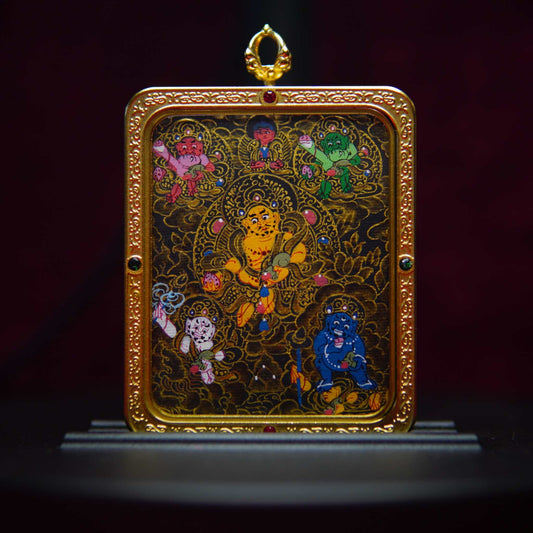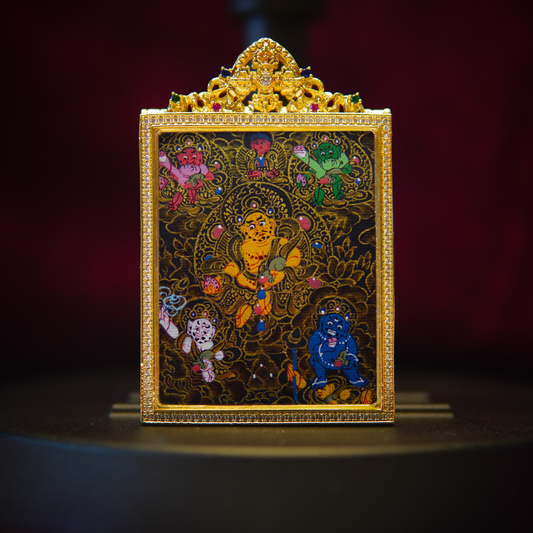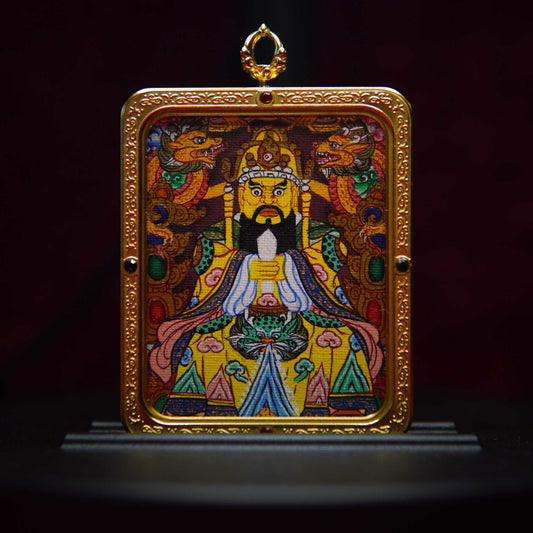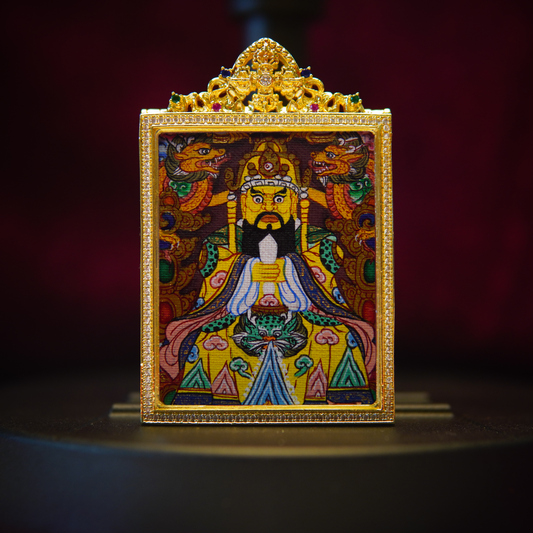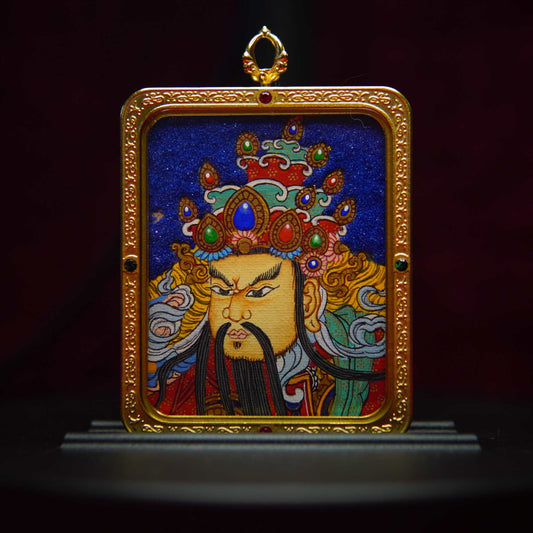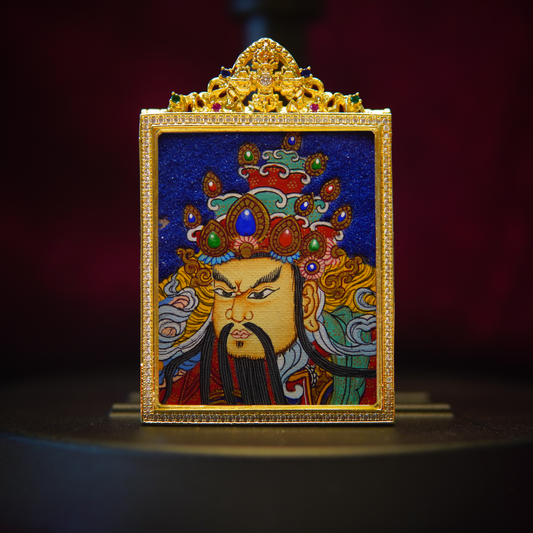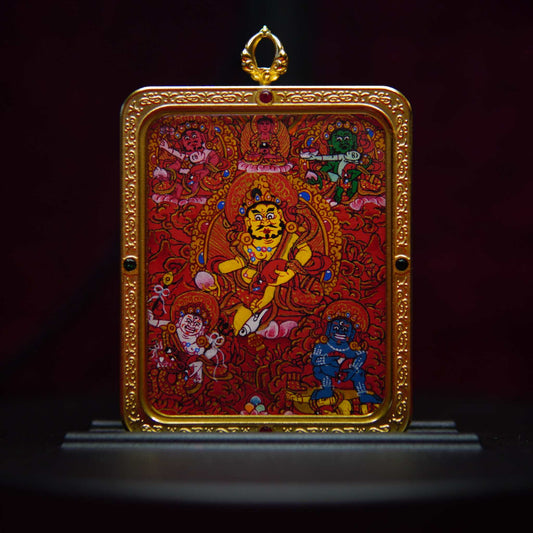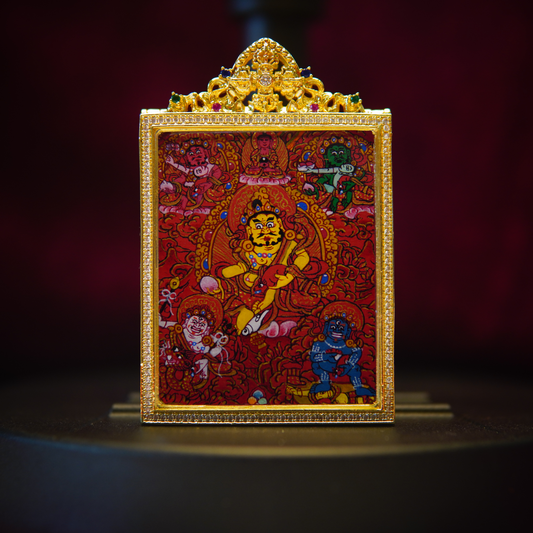Can I Collect Thangka as Art, Even If I’m Not Buddhist?
Tapita- Can I Collect Thangka as Art, Even If I’m Not Buddhist?
- 🌏 Thangka Is Sacred Art—but Also Cultural Heritage
- 🧠 What Matters Most? Respect.
- Here’s what that looks like:
- 🎨 Why Non-Buddhists Collect Thangkas
- 1. Spiritual Curiosity
- 2. Cultural Appreciation
- 3. Interior Beauty + Meaning
- 📿 What If I Wear a Thangka Pendant?
- ❓ Is It Cultural Appropriation?
- 🙏 Final Thoughts
If you’ve ever walked past a Tibetan Thangka—whether in a Himalayan monastery, a yoga studio, or a gallery—you know it’s hard to ignore. These vivid scroll paintings, filled with radiant colors and intricate symbolism, seem to vibrate with meaning.
But what if you’re not Buddhist?
Can you still collect and appreciate Thangka art?
The short answer is: Yes—absolutely.
But there’s a little more to it.
🌏 Thangka Is Sacred Art—but Also Cultural Heritage
A Thangka (also spelled Tangka or Thanka) is a Tibetan scroll painting, typically depicting Buddhas, protective deities, or spiritual diagrams like mandalas. Traditionally, they’re used for meditation, teaching, and visualization in Buddhist practice.
So yes—they’re sacred.
But they’re also a form of cultural heritage and artistic expression, passed down for centuries by skilled Himalayan artists.
Just like one can appreciate Islamic calligraphy, Christian icons, or Japanese woodblock prints without being Muslim, Christian, or Shinto, the same goes for Thangka.
🧠 What Matters Most? Respect.
You don’t need to chant mantras or follow Buddhist philosophy to display a Thangka.
But you do need to treat it with respect.
Here’s what that looks like:
-
✅ Display it thoughtfully — Avoid placing it directly on the floor or in bathrooms.
-
✅ Learn about it — Even a basic understanding of who the deity is (e.g. Green Tara = compassion; Vajrapani = protection) helps you connect more meaningfully.
-
✅ Support ethical artisanship — Choose hand-painted, fairly sourced Thangkas, not cheap machine prints.
Respect isn't about dogma—it’s about mindfulness.
🎨 Why Non-Buddhists Collect Thangkas
1. Spiritual Curiosity
Many people feel drawn to the energy or emotion within a Thangka—whether it’s the fierce protection of Vajrapani or the peaceful gaze of Amitabha. You don’t need a label to feel a connection.
2. Cultural Appreciation
Collectors often value Thangkas the same way they might value a Mayan textile or Aboriginal dot painting—as a window into a culture’s worldview.
3. Interior Beauty + Meaning
Thangkas bring more than color to a room. They add depth, intentionality, and conversation.
It’s not just décor—it’s dialogue.
📿 What If I Wear a Thangka Pendant?
You may have seen miniature Thangka art turned into necklace pendants. At Zendo Thangka, we create exactly that—hand-painted sacred images of figures like:
- Green Tara
- Yellow Dzambhala
- Padmasambhava (Guru Rinpoche)
- Guan Gong
- Medicine Buddha
Each one is placed in a pendant frame, often with blessing scrolls inside.
Wearing a Thangka pendant doesn’t mean you’re claiming a religion. It means you’re carrying a symbol that holds meaning for you—like strength, healing, or focus.
In fact, many customers say they’re not Buddhist—but the energy just feels right.
❓ Is It Cultural Appropriation?
This is an important question—and a fair one.
The answer lies in intention and integrity.
-
❌ Buying mass-produced prints made without knowledge or meaning, and treating them as exotic wall art: disrespectful
-
✅ Learning about the tradition, buying from Himalayan artists or Buddhist communities, and honoring the image’s significance: respectful cultural appreciation
In fact, many traditional lamas and artists welcome non-Buddhists who approach Thangkas with sincerity.
You don’t need to be born in Tibet to be touched by its wisdom.
🙏 Final Thoughts
You don’t have to be Buddhist to appreciate a Thangka.
You just have to be open—to the beauty, to the message, and to the culture that created it.
In a world hungry for depth, collecting a Thangka is more than an aesthetic choice. It’s a quiet commitment to meaning, mindfulness, and respect.
If a certain image moves you—trust that.
That’s where the real collection begins.

